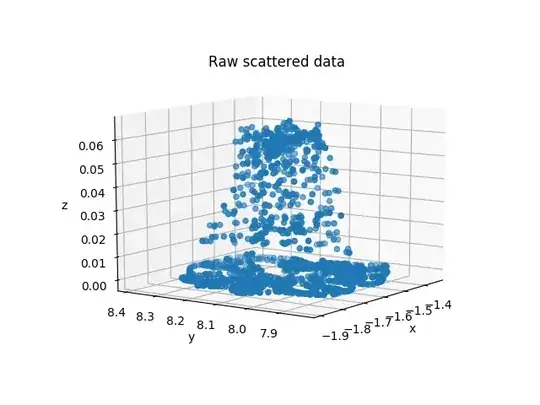I have a set of 3D points, which look as follows:

They form a shape similar to Gaussian/parabolic function or a mixture of these and my goal is to extract this shape.
I thought I could estimate parameters of a multivariate Gaussian from these points and in such way get a similar shape, however, they do not follow the normal distribution. So this is what I do to get a multivariate normal distribution from these data points.
I create a distribution of the points, where the probability for a point at (x,y) to occur is equal to z. Also, I normalize the z component, so that sum of all z components = 1. This gives me distribution which could be fed to Gaussian Mixture Model to estimate the parameters.
So I already implemented this and everything works nicely, but now I need to write it down with more theory behind and cannot figure it out.
Is it some well-known method?
How could this be modelled formally?
I was suggested to have a look at Gaussian Mixture Regression, but couldn't connect the dots.
EDIT: The x and y plane represents coordinates on a surface and z the amplitude of the sound generated at (x,y) position. The points were collected by scanning the surface with a sensor which emits sound with increasing intensity as we move towards the centre of the plot and decreases once moved away from the centre. Sample audio field could be found here.